

Kati Kovács
Born: October 25, 1944
in Verpelét, Hungary
in Verpelét, Hungary
Kati Kovács (born Katalin Anna Sarolta Kovács 25 October 1944), is a Ferenc Liszt and Kossuth Award-winning Hungarian pop-rock singer, performer, lyricist and actress.
She is one of the most famous singers of Hungary with dozens of recorded albums, awards and presentations in Hungary and abroad, and with international recognition and a very active career until today.
Kovacs is known for her raspy and very strong mezzo-soprano singing voice which received wide praise from Hungarian music critics who have called her: "The Best Female Voice of Hungary". She can sing opera, rock, jazz, pop, dance, blues and rock and roll.
She appeared first time on stage in 1962. She became the first famous nationally in 1965 when she won the seminal TV talent show in Hungary "Ki mit tud?". A year later, she achieved some even greater successes with her performance of the song I Won't Be Your Plaything (Nem leszek a játékszered) which won the TV Dance Song Festivals in Hungary in 1966.
In 1968 she played the leading roles in some films, for example The Girl.
The psychedelic spiritual Lord Send Us Rain (Add már, uram, az esőt!) won the Hungarian Dance Song Festival and the German Song Contest in 1972.
She worked with the Hungarian rock band Locomotiv GT on three albums (Kovács Kati & Locomotiv GT, Közel a naphoz and Kati) and a compilation (Rock and Roller).
In 1974 she won the Castlebar Song Contest in Ireland with the song Roses Are Red, Violets Are Blue (Nálad lenni újra jó lenne).
She appeared as a singer in the 1977 Hungarian film Ök ketten (Women), which was directed by Márta Mészáros.
Since 1979 she sang the covers of several disco and hit songs in Hungary originally performed by Donna Summer, Barbra Streisand, Laura Branigan, Madonna, Tanita Tikaram, Sam Brown, Anastacia etc.
Besides singing, Kati Kovács also writes lyrics. One of her best known works which she also performed is the lyrics to Vangelis’ composition 1492: The Conquest of Paradise.
Since 23 October 2009 she works with the psychedelic soul-beat band The Qualitons. They had a very successful concert in Budapest with the singer's rare beat and funk songs. It is said to be Kati's big comeback. In 2010 they are on tour around the country. They were planning a new album together but their connection is lost.
Christina Aguilera's 2010 single "Woohoo" contains a sample from the song Add már, uram, az esőt!.
Source: Article "Kati Kovács" from Wikipedia in English, licensed under CC-BY-SA 3.0.
She is one of the most famous singers of Hungary with dozens of recorded albums, awards and presentations in Hungary and abroad, and with international recognition and a very active career until today.
Kovacs is known for her raspy and very strong mezzo-soprano singing voice which received wide praise from Hungarian music critics who have called her: "The Best Female Voice of Hungary". She can sing opera, rock, jazz, pop, dance, blues and rock and roll.
She appeared first time on stage in 1962. She became the first famous nationally in 1965 when she won the seminal TV talent show in Hungary "Ki mit tud?". A year later, she achieved some even greater successes with her performance of the song I Won't Be Your Plaything (Nem leszek a játékszered) which won the TV Dance Song Festivals in Hungary in 1966.
In 1968 she played the leading roles in some films, for example The Girl.
The psychedelic spiritual Lord Send Us Rain (Add már, uram, az esőt!) won the Hungarian Dance Song Festival and the German Song Contest in 1972.
She worked with the Hungarian rock band Locomotiv GT on three albums (Kovács Kati & Locomotiv GT, Közel a naphoz and Kati) and a compilation (Rock and Roller).
In 1974 she won the Castlebar Song Contest in Ireland with the song Roses Are Red, Violets Are Blue (Nálad lenni újra jó lenne).
She appeared as a singer in the 1977 Hungarian film Ök ketten (Women), which was directed by Márta Mészáros.
Since 1979 she sang the covers of several disco and hit songs in Hungary originally performed by Donna Summer, Barbra Streisand, Laura Branigan, Madonna, Tanita Tikaram, Sam Brown, Anastacia etc.
Besides singing, Kati Kovács also writes lyrics. One of her best known works which she also performed is the lyrics to Vangelis’ composition 1492: The Conquest of Paradise.
Since 23 October 2009 she works with the psychedelic soul-beat band The Qualitons. They had a very successful concert in Budapest with the singer's rare beat and funk songs. It is said to be Kati's big comeback. In 2010 they are on tour around the country. They were planning a new album together but their connection is lost.
Christina Aguilera's 2010 single "Woohoo" contains a sample from the song Add már, uram, az esőt!.
Source: Article "Kati Kovács" from Wikipedia in English, licensed under CC-BY-SA 3.0.
Movies for Kati Kovács...
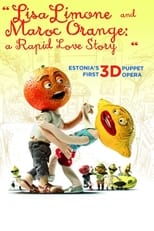
Title: Lisa Limone and Maroc Orange: A Rapid Love Story
Character: Guard #1 (voice)
Released: March 8, 2013
Type: Movie
Main hero is a singing boat refugee – orange boy Maroc. He dreams about freedom. Lemon girl Lisa collects singing seashells and dreams about love. Lisa’s father is a businessman, owner of a ketchup factory and tomato plantation. He loves money. And so the opera begins: Poor Maroc escapes from his homeland and defying stormy waters take a boat across the sea to the “promised land”. Upon arrival he is forced into being a slave worker in a tomato plantation instead of freedom, democracy, wealth and parties he had hoped for. Despite the initial let down our orange boy is destined to gain happiness – selfish Lisa falls in love with him and sets him free. We see an orange revolution – houses are blown up and tomatoes are made from ketchup, all in the name of democracy! Movie that is full of rebellion and love has happy ending – we will see sour-sweet culmination of lemon girl’s and orange boy’s love.



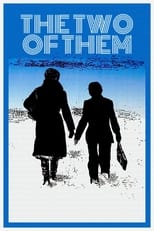
Title: The Two of Them
Character: Singer
Released: January 5, 1978
Type: Movie
Looking for a safe place to live after being harassed by her husband, a depressive and violent man, Juli stays at a women's shelter run by Mária.

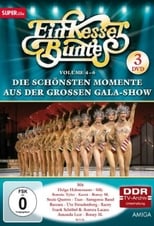
Title: A Kettle of Colour
Character: Self
Released: January 29, 1972
Type: TV
The show was meant to compete with those on West German television. To this end it was fairly successful even attracting a following in parts of West Germany which could receive Eastern TV. Its production values were high. Apart from song and dance numbers and appearances from East German celebrities, almost every broadcast featured well-known stars from the west, often after their popularity had peaked in their home countries.



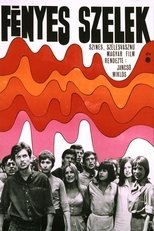
Title: The Confrontation
Character: Szabó Teri
Released: February 6, 1969
Type: Movie
In post-WWII Hungary, a group of Communist college students arrive at a Catholic seminary hoping to engage in peaceful debate with its students.

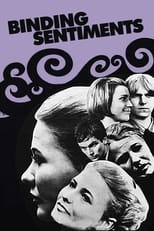
Title: Binding Sentiments
Character: Kati
Released: January 9, 1969
Type: Movie
Edit, who became the wife of a politician out of a simple peasant girl, suddenly becomes a widow as a result of an accident. She never loved her husband. She lives a wealthy and lonely life amidst false friends, facing one of the last alternatives of her life, i.e. having to face her past in the hope of an independent new beginning.

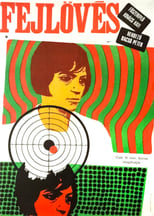
Title: The Fatal Shot
Character: Klári
Released: October 2, 1968
Type: Movie
Laci and the divorced Klári decide to commit suicide, since neither's parents give them shelter, they have no place to sleep, no decent job and no future. Béla, who lives on stealing cars, joins them. He has a gun. Based on a true story.

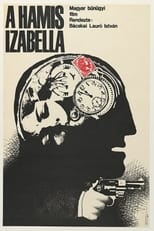
Title: The Fake "Isabella"
Character: Vadász Ilona
Released: June 5, 1968
Type: Movie
Végh Márta, the teacher is looking for her student Vadász Ica in the Buda villa, but she only finds the tenant, Mrs. Paár - dead. The investigation reveals that Mrs. Paár was murdered for an invaluable stamp, the "Fake Isabella".

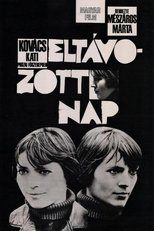
Title: The Girl
Character: Szõnyi Erzsi
Released: May 16, 1968
Type: Movie
A young woman leaves a state orphanage to find her mother in this interesting examination of how the overt repression of women in the older pattern of village life has been replaced by the more subtle exploitation inherent in the apparently freer existence of young girls in the contemporary city.
